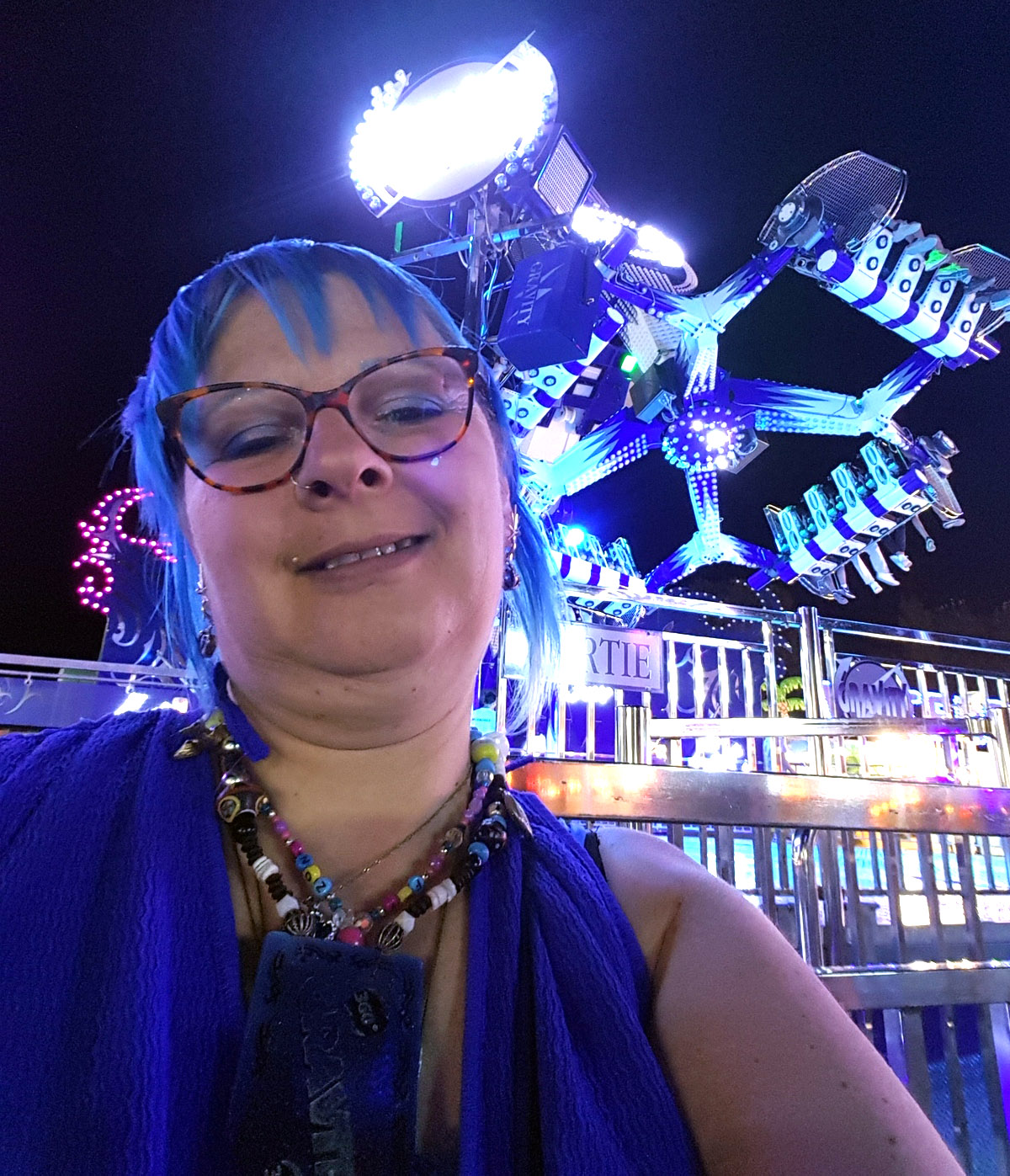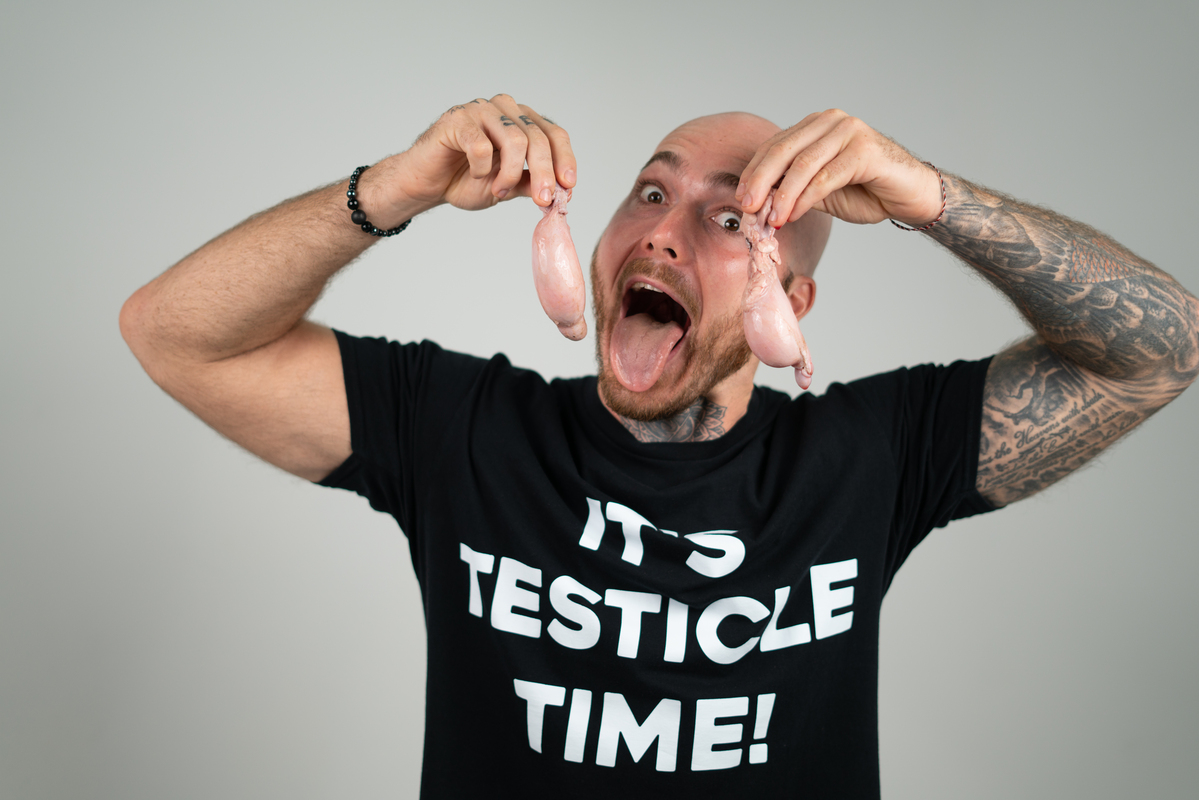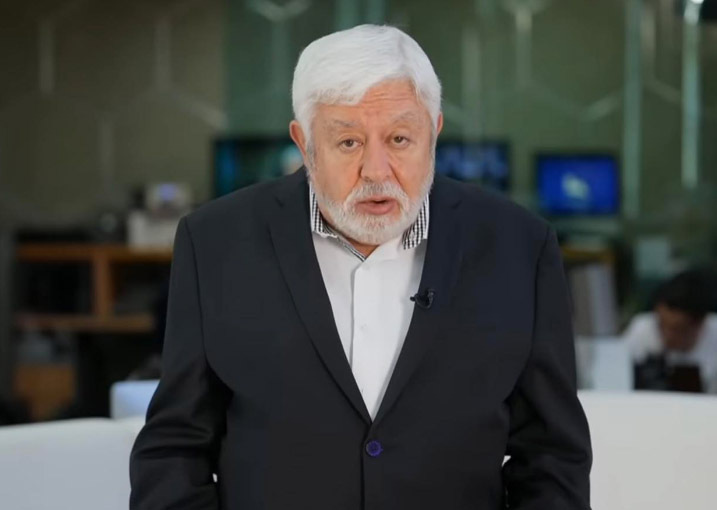An artisan of body piercings opens up about the polarized reactions her work elicits from the public, asserting that while many are captivated, there exists an equal measure of repulsion.
Over a span of 15 years, Mel Sprinkle has crafted herself into a professional piercer, having discovered her penchant for temporary or ‘play’ piercings. She harnessed her realization that needles inserted into the skin could birth captivating designs, a form of transient artistry.
Demanding fees ranging from £300 to £1,200 ($400 to $1,500) per session, this transient art simultaneously entrances and horrifies onlookers.
Mel extensively showcases her extraordinary artistry on platforms like TikTok and Instagram, boasting a following of over 18,200 admirers as she crafts intricate designs through needlework.
“My creations tend to evoke mixed reviews – needle art is not universally appreciated, and I don’t anticipate universal admiration,” the 37-year-old artist, hailing from Washington, USA, shares with http://NeedToKnow.co.uk.
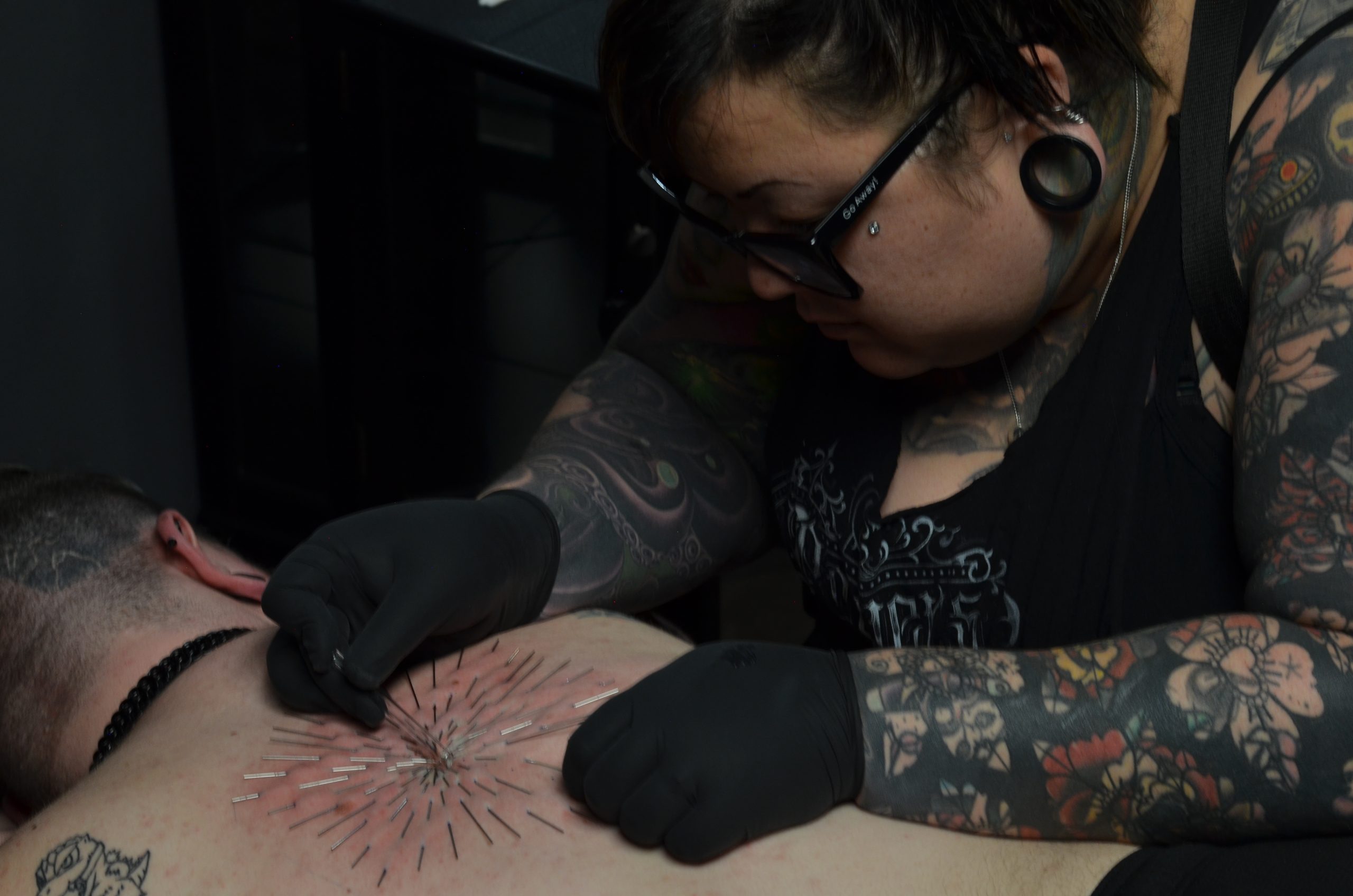
“I relish the range of reactions, particularly when individuals find themselves engrossed by the overarching design, only to come to terms with the fact that needles have brought it to life.
“They’re caught in a state of uncertainty – torn between the desire to be repulsed and an unyielding compulsion to continue observing.
“The negativity doesn’t weigh on me; much of it springs from ignorance and a refusal to comprehend.”
She delves into her motives, saying, “My venture into artistic piercings stemmed from my desire to transcend conventional practices.
“I yearned to transform my medium of work into an artistic expression.”
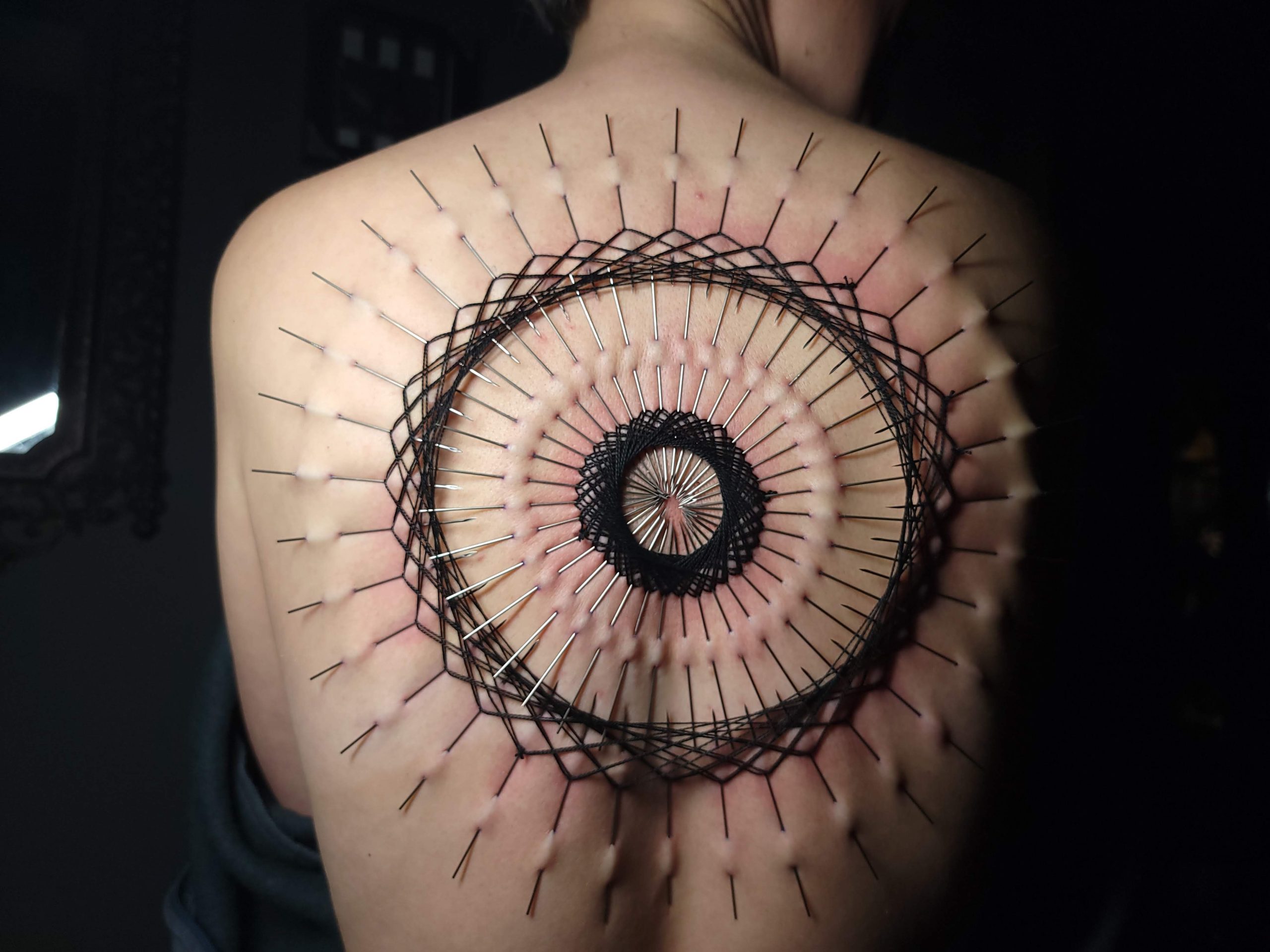
While Mel perceives this process as a creative outlet, she asserts that the methodical precision of inserting needles and the hygienic aspects of managing blood instill her with a unique sense of exhilaration.
Nevertheless, a fraction of her clientele are driven by the desire to experience the pain intrinsic to piercings.
“Some patrons view it as a trial of their limits, an achievement to boast of, or simply as fodder for photography,” she elucidates.
“I partake in this journey for the sake of the artistic process. The progression, the concept, the design, the application, the removal, the blood, the wounds, and the recuperation all hold my fascination.”
“Every facet of existence fuels my inspiration; it could be as unassuming as a pattern etched onto an object – I’m ceaselessly exploring ways to replicate it using needles.
“The content I share on social media merely scratches the surface of the extensive process.”
Among her clients is 31-year-old Courtney Guest, who was initially drawn to the realm of play piercings by the prospect of becoming a living canvas.
Despite the disapproval from those who find the practice peculiar, Courtney remains unwavering in her passion for this form of art.
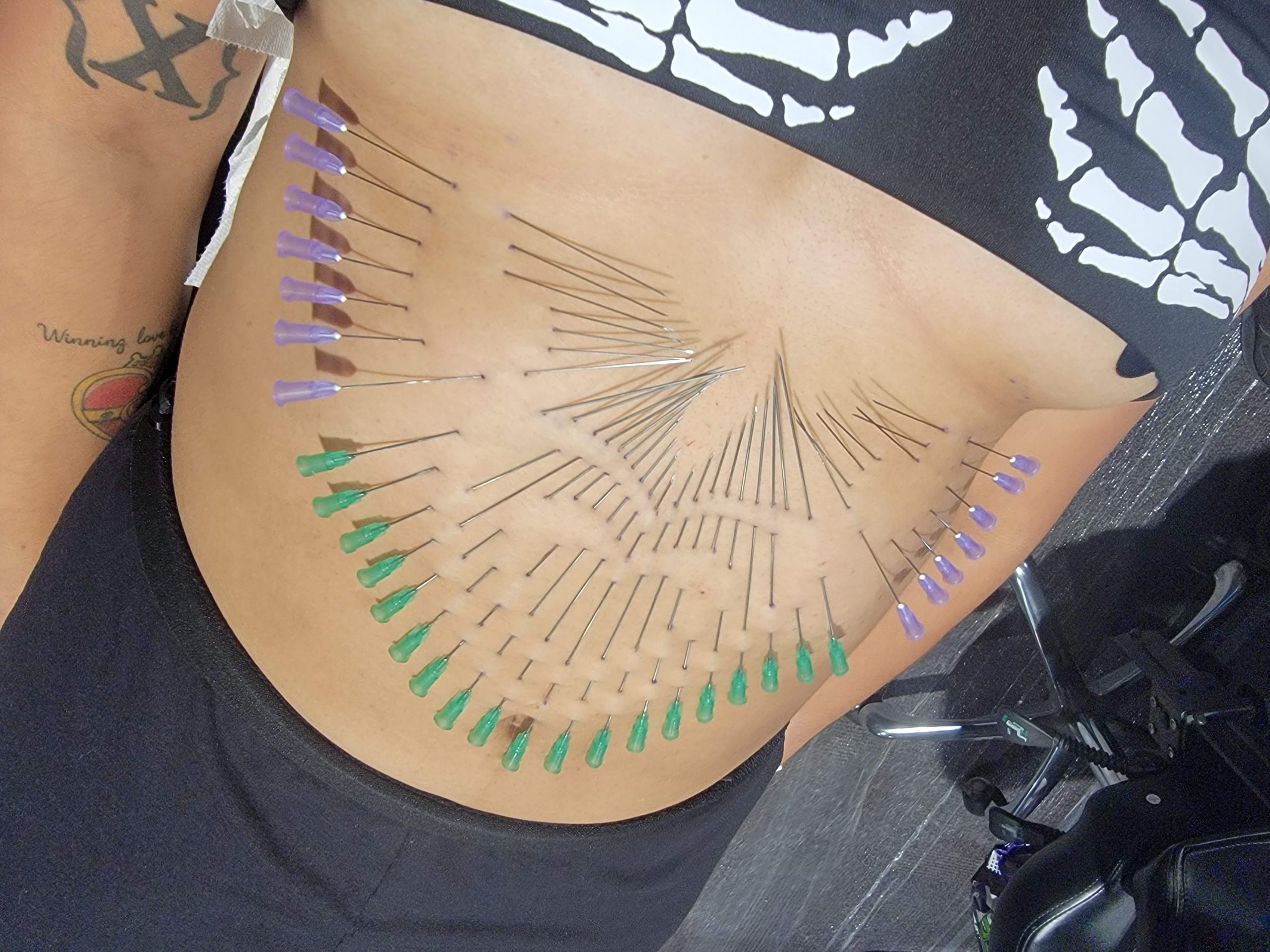
“I derive enjoyment from play piercings since they embody an artistic creation, allowing you to metamorphose into the artwork itself,” she explains.
“In my view, body modifications exude an unparalleled coolness, serving as an exceptional channel for self-expression.
“Some individuals are immensely enamored by it, hailing it as an emblem of my strength, while others find it peculiar and are less receptive.
“I seldom invest energy in negative remarks; I recognize that this art form isn’t universally comprehensible.
“Witnessing the final realization of the piercing arrangement and observing the concept spring to life are experiences I genuinely treasure.”
In a recent TikTok video, Mel showcases a client’s arm embellished with a spiral pattern of needles.
With over 26,000 views and 2900 comments, the video elicits a spectrum of reactions from entranced viewers.
Aspen’s comment reads: “Oh, I see love it!”
One individual remarks: “This is remarkably cool.”
Katelyn chimes in: “Women who delve into this are truly some of the most courageous individuals around! Wow!”
Stacia’s reaction is simply: “Why?”
Another person offers praise: “Kudos to their endurance!”
Candace’s response is: “Why though?”
Please note that the response has been written in British English.




